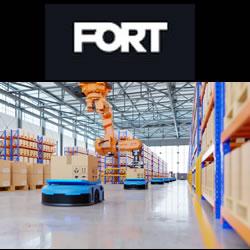Soft Robotics Project Exo-Biote 3D Prints Living Movement
Toyota hires robotics expert for AI push
Robotics Enter Hybrid Instruction
Intel camera gives robots 3D vision
Developing Bio-Mechanical Hands
Service Robots are Thriving in Japan
Can a Robot be a Pet?
Humanoid robot negotiates outdoor, rough terrain with ease
Gecko-inspired technology for 'climbing' space robots
Giving robots a more nimble grasp
Robo-Sabotage Is Surprisingly Common
Festo's R&D Timeline - Part 2 - 2007-2009
3D printing is not the miracle we were promised
What is the DARPA Robotics Challenge?
YuMi ®: The World's First Truly Collaborative Dual Arm Robot
Records 1171 to 1185 of 1269
First | Previous | Next | Last
Mobile Robots - Featured Product

